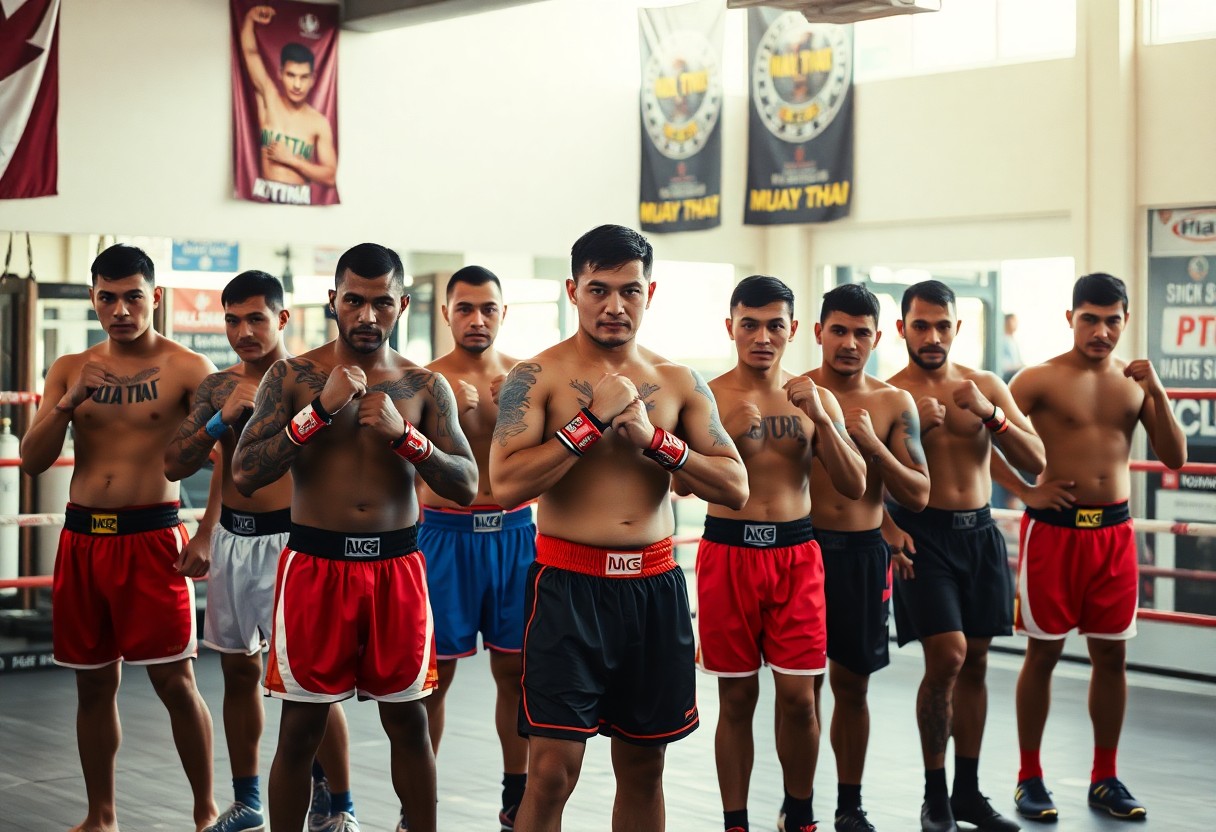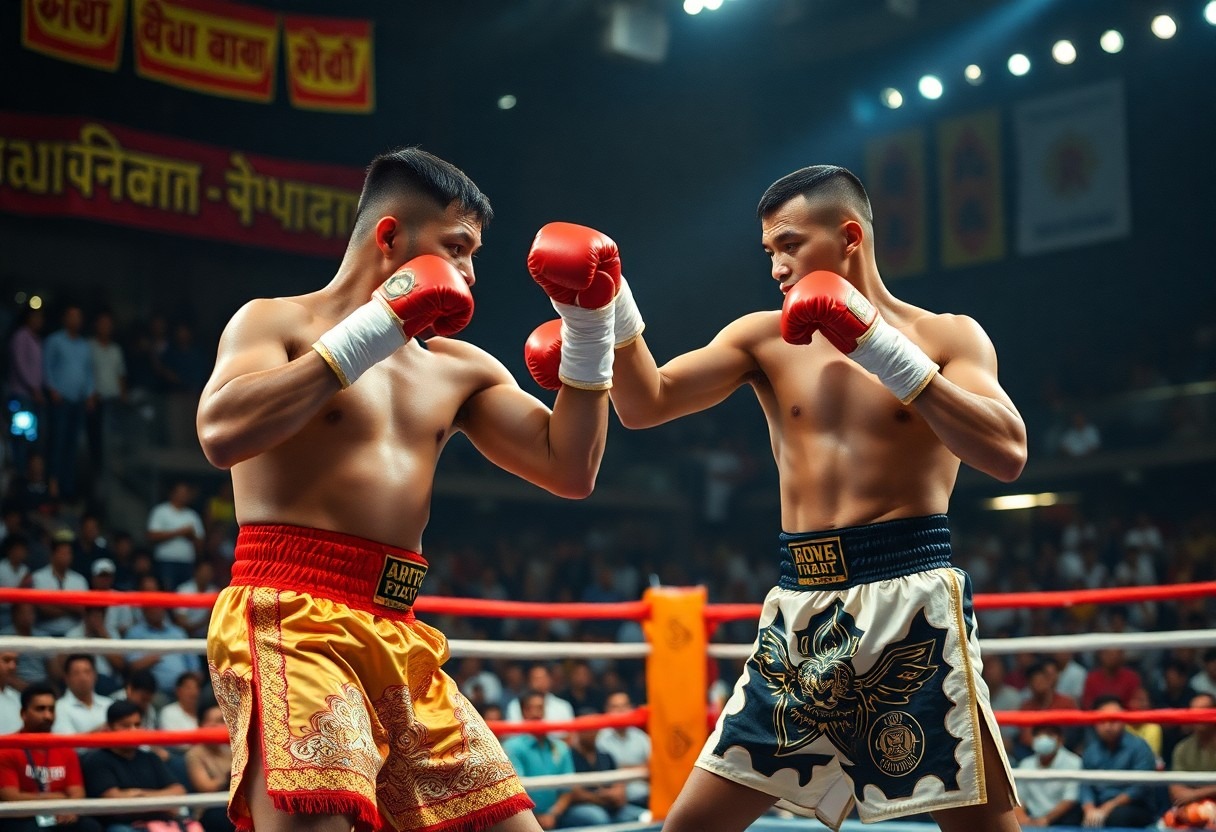
Over time, effective betting in Muay Thai requires a comprehensive understanding of the fighters involved. Analyzing a fighter’s style, recent performance, and physical condition is necessary for making informed decisions. Evaluating aspects like fight history, training camps, and previous match outcomes can reveal critical insights into their potential success. Furthermore, understanding injury records and mental readiness can help identify unstable fighters who may underperform. This guide will equip you with the necessary tools to make sound bets based on strategic observations.
Understanding Fighter Statistics
Analyzing fighter statistics provides imperative insights into their performance and potential outcomes in the ring. Effective assessment goes beyond win-loss records; it includes examining different metrics that paint a detailed picture of a fighter’s capabilities and tendencies, such as striking accuracy, takedown success rates, and defense percentages. These statistics can indicate a fighter’s strengths and weaknesses, helping bettors identify value in their wagers.
Key Metrics to Consider
Focus on striking accuracy, total strikes landed, and knockout ratios when analyzing fighters. Understanding defensive metrics, like average strikes absorbed and takedown defense, provides insight into a fighter’s survivability. Additionally, examining fight history against similar opponents can reveal patterns and predict potential outcomes based on fighting styles.
Importance of Recent Fight Outcomes
Recent fight outcomes significantly influence a fighter’s momentum and psychological state entering a match. Streaks of wins, especially against high-caliber opponents, can boost a fighter’s confidence and performance. Conversely, a series of losses may indicate a decline in form, affecting betting decisions. Evaluating the quality of opponents faced in recent matches is equally vital, as it provides context to each fighter’s journey and readiness for the upcoming bout.
For example, a fighter on a five-fight winning streak against top-tier competitors showcases not only adaptability but also improved techniques and mental fortitude. Conversely, a fighter emerging from a four-fight losing streak may be experiencing psychological setbacks, leading to reduced performance. Analyzing victories and defeats over the past year or two provides a clearer understanding of a fighter’s current state and potential future performance, guiding bettors toward more informed decisions.
Evaluating Fighting Style
Fighters exhibit distinct styles that significantly impact their performance. A well-rounded analysis involves understanding their primary techniques, strengths, and weaknesses, as these traits determine how they adapt during bouts. Some fighters excel in brutal striking, focusing on kicks and punches to dominate opponents, while others may utilize evasive movements and defensive tactics to outlast their competition. Recognizing these attributes can provide insights into potential outcomes and betting scenarios.
Striking vs. Grappling
Striking prowess often defines a fighter’s reputation in the ring, showcasing their power and precision. Conversely, grappling skills can turn the tide of a match, allowing fighters to control opponents and dictate the fight’s pace. A fighter’s emphasis on striking or grappling shapes their strategy; for instance, a dominant striker may face challenges against a skilled grappler who exploits takedowns to nullify their striking advantage.
Adaptability and Fight IQ
Fight intelligence and adaptability are fundamental elements that differentiate elite fighters from the rest. The ability to adjust strategies on the fly, based on an opponent’s actions, showcases a fighter’s analytical skills and awareness during high-pressure situations.
Evaluating a fighter’s adaptability often involves analyzing past performances where they faced various styles. For example, if a fighter consistently improves throughout a match, making adjustments to counter their opponent’s techniques, this indicates high fight IQ. Notable examples include fighters like Georges St-Pierre, who effectively adjusted his game plan in title fights, leading to decisive victories. Such attributes not only enhance a fighter’s competitiveness but also provide valuable insight for bettors, as fighters who can alter their strategy mid-fight are more likely to secure wins even under adverse circumstances.
Assessing Physical Conditioning
Physical conditioning serves as a critical determinant of a fighter’s performance in the ring. Factors such as strength, agility, and overall fitness level significantly influence a fighter’s ability to execute their techniques and maintain composure throughout the bout. Assessing a fighter’s conditioning provides insight into their stamina and fight strategy, often indicating whether they can handle the pace of a high-intensity match.
Cardio and Endurance
Superior cardio and endurance are vital for sustaining performance, particularly in longer bouts. Fighters with well-developed cardiovascular systems can maintain their energy levels, allowing them to execute combinations and evade strikes effectively. For example, fighters who have completed extensive rounds in training camps often showcase enhanced stamina, making them more likely to outlast opponents who may tire quickly.
Injury History and Recovery
A fighter’s injury history provides valuable insight into their reliability and potential risk during a match. Previous injuries can lead to lasting effects on performance, depending on the type and severity. Regularly injured fighters might experience reduced confidence, impacting their fighting style and point of effectiveness in the ring. Evaluating a fighter’s recovery process is equally important, as a well-managed comeback can rejuvenate their performance, while persistent issues may indicate a permanent disadvantage.
Assessing a fighter’s injury history involves looking at specific incidents and their outcomes. For example, a fighter who suffered a significant knee injury may struggle with mobility, influencing their fight strategy, especially against agile opponents. Delving into recovery timelines can also reveal how effectively they have bounced back from setbacks. Fighters who’ve taken time to rehabilitate properly tend to return with renewed vigor, whereas those with rushed returns could face risks during bouts, elevating the financial risk for bettors.
Analyzing Fight History
Fight history reveals a fighter’s performance trajectory and resilience over time. By examining past bouts, including wins, losses, and the types of opponents faced, a clearer picture of their strengths and weaknesses emerges. Pay attention to the rates of knockouts versus decisions, as well as patterns in their fighting styles, which can indicate how they may fare in future matchups.
Strength of Schedule
The strength of schedule significantly impacts a fighter’s development and readiness. Competing against top-ranked opponents can expose a fighter to various tactics and styles, enhancing their adaptability. Conversely, fighting lower-caliber opponents may create inflated records that don’t accurately reflect true skill levels. Assessing the quality of opponents faced provides insight into how fighters may perform under pressure.
Previous Matchups Against Similar Opponents
Analyzing previous matchups against similar opponents sheds light on a fighter’s ability to adapt and strategize. For instance, if a fighter faced a similar athlete and lost due to a technical knockout, it’s vital to assess whether they have improved in that specific area or if that opponent’s style presents a consistent challenge.
The outcomes of prior encounters against opponents with comparable attributes—such as height, reach, and fighting style—highlight potential weaknesses or advantages. For example, if a fighter shows consistent vulnerability to leg kicks from opponents who use a similar strategy, that pattern can predict future performance. It may also reveal whether they’ve made adjustments in training to address those weaknesses. Notably, analyzing these matchups provides context beyond numerical statistics, enhancing your betting insights significantly.
Observing Fight Preparations
Analyzing a fighter’s preparations leading up to a bout provides insight into their readiness and mindset. Factors such as training intensity, sparring partners, and the overall atmosphere in the gym can significantly affect performance. Observing behaviors like focus and determination during practices can indicate their mental state, which is vital for success in the ring.
Training Camp Dynamics
Training camp dynamics often influence a fighter’s performance, with the environment playing a pivotal role. Positive camaraderie and effective communication within the team can lead to enhanced motivation and skill development. A harmonious training camp often translates into improved performance, while any signs of conflict or disorganization may hinder a fighter’s preparation.
Changes in Coaching Staff
Changes in coaching staff can dramatically impact a fighter’s training and performance. New coaches may bring fresh techniques, innovative strategies, and different philosophies that can either benefit or disrupt a fighter’s routine. Observing how well a fighter adapts to these changes offers key insights into their potential performance in upcoming fights.
For instance, if a renowned coach joins a fighter’s team, it could lead to improvements in technique, strategy, and mental preparation. Conversely, if a long-time coach is replaced, it may result in inconsistent training methods that the fighter must adjust to quickly. Studies have shown that fighters experiencing significant changes in their coaching staff often see fluctuations in performance, particularly in their next few bouts as they adapt to new dynamics.
Psychological Factors
Psychological factors play a significant role in a fighter’s performance and should never be overlooked. A fighter’s mental state, confidence levels, and ability to handle pressure can directly influence the outcome of a match. Analyzing factors such as their previous fight experiences, mindset entering the ring, and how they react under stress can provide valuable insights. After assessing these elements, bettors can make more informed decisions when placing their bets.
Mental Toughness and Resilience
Mental toughness and resilience are vital traits for a successful fighter. Those who exhibit a strong ability to withstand adversity tend to perform better in high-stakes situations, often turning the tide in close matches. Fighters who have faced setbacks, such as losses or injuries, often demonstrate increased determination and can recover more quickly, giving them an edge in future competitions.
Pressures of Competition
The pressures of competition can greatly affect a fighter’s performance. The atmosphere of a live event, coupled with media scrutiny, can lead to heightened anxiety and impact a fighter’s ability to execute their game plan. Some fighters thrive under such conditions, flipping nerves into energy, while others may crumble, affecting their timing and decision-making.
Statistics show that fighters with experience in high-pressure environments often excel compared to those who are not accustomed to the spotlight. For instance, elite-level fighters may handle crowd expectations and media questions effortlessly, while less experienced opponents may struggle under duress, showcasing their vulnerabilities. Understanding how a fighter reacts to pressures can be a determining factor in how they will perform on fight night, thus affecting the betting landscape significantly.
Final Words
Hence, effectively analyzing fighters before placing a Muay Thai bet requires a comprehensive approach that includes evaluating their fight history, skill set, physical condition, and recent performance trends. Consider their adaptability, tactics employed in previous matches, and psychological resilience under pressure. Additionally, pay attention to the fighter’s training camps and coaching, as these factors can significantly influence their performance. By gathering and synthesizing this information, bettors can make informed decisions that enhance their chances of success in the dynamic world of Muay Thai betting.
FAQ
Q: What statistics should I consider when analyzing fighters for a Muay Thai bet?
A: Key statistics include each fighter’s win-loss record, knockout percentage, and fighting style. Additionally, assess their performance against common opponents and their recent fight history for form and consistency.
Q: How does the location of the event impact fighters’ performances?
A: The location can affect fighters due to factors like travel fatigue, altitude, and local fan support. Home fighters often have an advantage, as they are accustomed to the environment and crowd dynamics, which can influence their performance.
Q: Why is it important to evaluate fighters’ training camps before betting?
A: Training camps play a significant role in a fighter’s preparation. Analyzing the quality of their training facility, coaching staff, and sparring partners can provide insight into their readiness and strategy for the fight.





